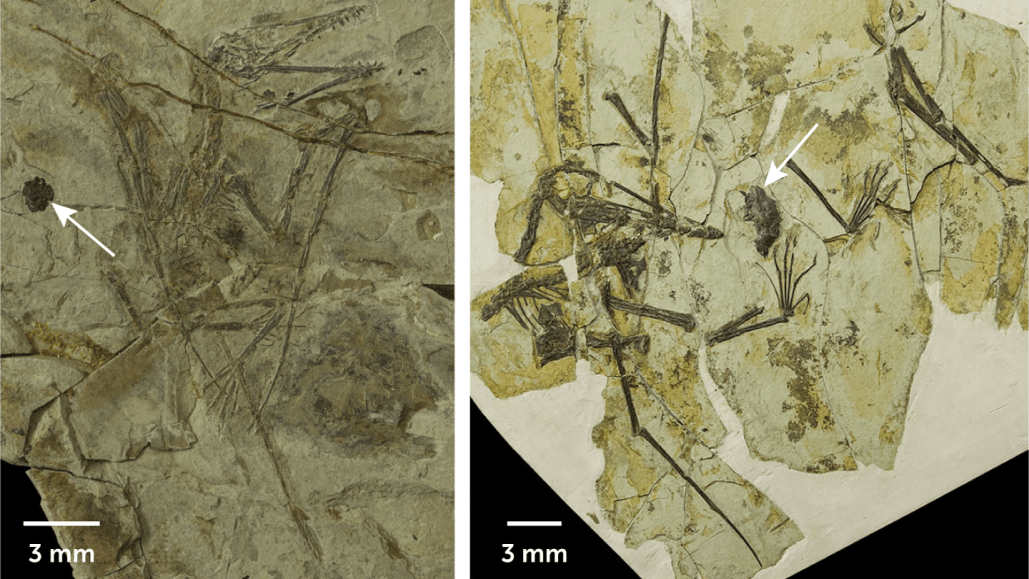Fossils reveal that pterosaurs puked pellets
Fish scale–filled balls found by two fossils suggests regurgitation was the pterosaurs' final course

Scientists identified a tiny gastric pellet (arrows) alongside each of two fossilized pterosaurs: a juvenile (at left) and an adult (at right).
S. Jiang et al/Philosophical Transactions of the Royal Society B 2022







